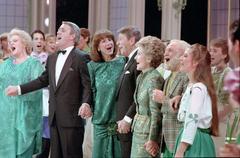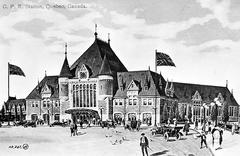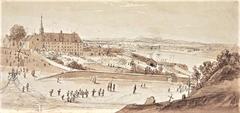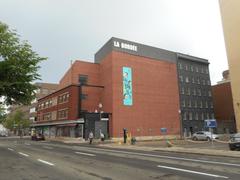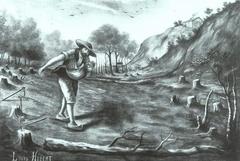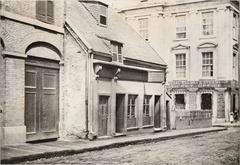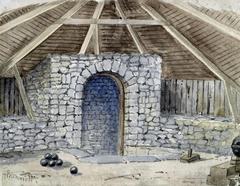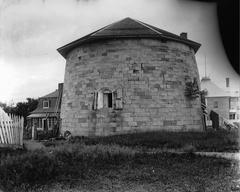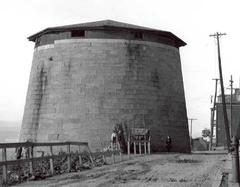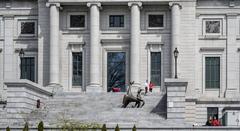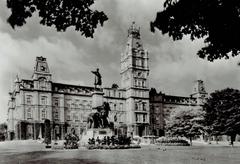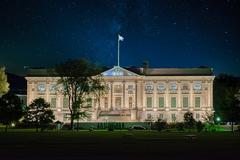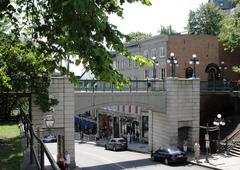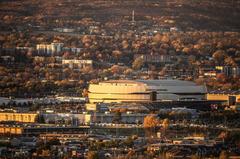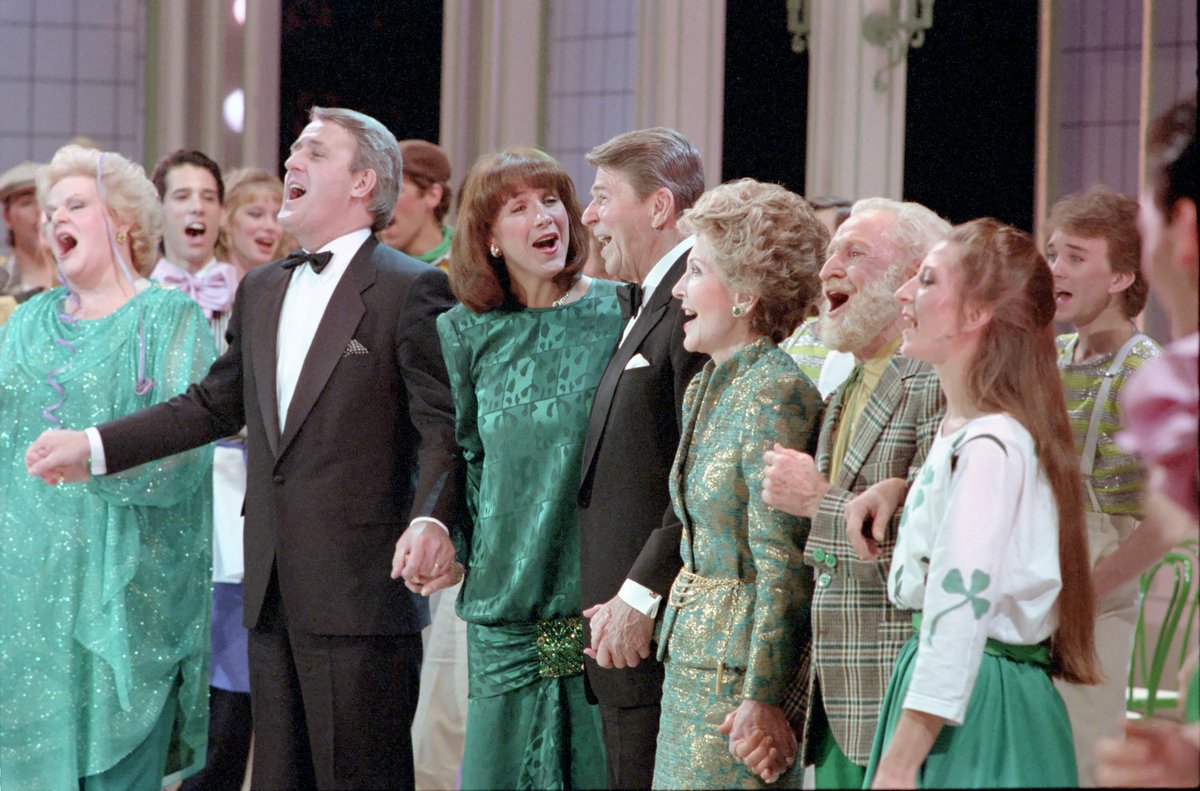
Grand Théâtre de Québec: Visiting Hours, Tickets, and Historical Sites in Quebec City
Date: 15/06/2025
Introduction
Nestled in the heart of Quebec City, the Grand Théâtre de Québec is a landmark of cultural vitality, architectural innovation, and historical significance. Conceived during the Quiet Revolution to commemorate both the Canadian Centennial of 1967 and the Quebec Conference of 1864, this iconic venue was brought to life through an international competition won by architect Victor Prus. Today, the theatre stands as a premier destination for performing arts and a beacon of Quebec’s evolving identity (Grand Théâtre de Québec; Wikipedia).
This guide provides everything you need to know about visiting the Grand Théâtre: its rich history, architectural marvels, ticketing and accessibility details, and tips for exploring nearby attractions in Quebec City.
Table of Contents
- Introduction
- Origins and Historical Context
- Architectural Highlights
- Cultural and Symbolic Significance
- Resident Organizations
- Visitor Information
- Nearby Attractions and Historical Sites
- Visitor Experience and Seasonal Highlights
- Frequently Asked Questions (FAQ)
- Visuals and Media
- Internal and External Links
- Conclusion and Call to Action
- References
Origins and Historical Context
The Grand Théâtre de Québec was conceived in 1963 by Premier Jean Lesage as part of Quebec’s cultural renaissance. Intended as a centennial project and a tribute to Canadian Confederation, its realization was marked by innovation and ambition. Polish-Canadian architect Victor Prus was selected after a national competition in 1964, with construction beginning in 1966 and the theatre opening its doors in 1971 (Wikipedia; Grand Théâtre de Québec).
Architectural Highlights
Brutalist Design and Restoration
Victor Prus’s brutalist design features bold geometric forms and raw concrete, making the theatre a striking presence on Boulevard René-Lévesque. Inside, two main performance halls—Salle Louis-Fréchette (1,885 seats) and Salle Octave-Crémazie (510 seats)—share a modern vestibule, optimizing visitor flow and acoustics (ArchDaily).
By the 2010s, the concrete exterior showed signs of deterioration. In response, a groundbreaking restoration encased the structure in a glass envelope, protecting it from the elements and earning widespread acclaim for its sensitive approach to heritage conservation and sustainability (Archello).
Jordi Bonet Mural
A monumental bas-relief mural by Jordi Bonet spans three interior walls, integrating sculpture, architecture, and provocative poetry by Claude Péloquin: “Vous êtes pas écœurés de mourir, bande de caves! C’est assez!” The mural stands as a symbol of artistic freedom and cultural dialogue (Wikipedia).
Cultural and Symbolic Significance
The Grand Théâtre is not just an architectural icon; it is a living testament to Quebec’s cultural ambition and modern identity. Hosting major resident companies—including Orchestre symphonique de Québec, Opéra de Québec, and Théâtre du Trident—it has shaped the artistic life of the city since its opening (The Canadian Encyclopedia).
Under the leadership of Annie Talbot, the theatre emphasizes inclusivity and accessibility, with robust outreach and programming designed to engage all segments of the community (Journal de Québec).
Resident Organizations
- Orchestre symphonique de Québec: Canada’s oldest active orchestra, performing a diverse season of classical and contemporary works (The Canadian Encyclopedia).
- Opéra de Québec: Renowned for grand operatic productions and the annual Festival d’opéra de Québec (operadequebec.com).
- Théâtre du Trident: Presents a repertoire of Quebecois, Canadian, and international plays (The Canadian Encyclopedia).
- Club musical de Québec: Offers chamber music and solo recitals by world-class artists (The Canadian Encyclopedia).
- Conservatoire de musique de Québec: Provides music education and training within the theatre complex.
Visitor Information
Visiting Hours & Tickets
- Box Office Hours: Monday–Saturday, 10:00 AM–5:00 PM; extended on performance days.
- Performance Day Access: Theatre doors open one hour before curtain.
- Ticketing: Purchase online, by phone, or in person. Prices range from $20–$120 CAD, with discounts for students, seniors, and groups. Subscription packages are available. (Grand Théâtre de Québec)
- Guided Tours: Offered periodically; check the website or contact the box office for availability.
Accessibility
- Fully accessible with ramps, elevators, designated wheelchair seating, and accessible restrooms.
- Assistive listening devices and personalized assistance are available by request.
- On-site parking with accessible spaces; plan to arrive early for best availability.
Getting There
- Address: 269, boulevard René-Lévesque Est, Québec City, G1R 2B3.
- Public Transit: As of June 2025, no direct stops within 5 km; use private vehicles, taxis, rideshares, or walk from nearby districts.
- Parking: On-site and nearby options available, with applicable fees.
Nearby Attractions and Historical Sites
Enhance your visit by exploring these nearby highlights:
- Musée national des beaux-arts du Québec (MNBAQ): Art museum with accessible tours (MNBAQ).
- Parc des Champs-de-Bataille (Plains of Abraham): Historic park with paved, accessible pathways (Plains of Abraham).
- Parliament Building (Hôtel du Parlement): Guided tours showcasing Quebec’s political heritage (Assemblée nationale du Québec).
- Avenue Cartier & Grande Allée: Dining, nightlife, and entertainment options, many with accessibility accommodations.
- Palais Montcalm: Concert venue for diverse musical acts (Palais Montcalm).
Visitor Experience and Seasonal Highlights
- Performance Variety: Nearly 300 performances yearly, including classical, opera, theatre, jazz, pop, comedy, and immersive art.
- Festivals: Central venue for the Festival d’été de Québec, Festival d’opéra de Québec, and Quebec City Jazz Festival (Songkick).
- Immersive Experiences: The Hubblo Dome offers 360° visual and sound projections Thursday–Sunday all summer (quebec-cite.com).
- Art Installations: Jordi Bonet’s mural and contemporary exhibitions in the lobby.
- Family & Educational Programs: Masterclasses, workshops, and discounted family tickets.
Visitor Tips:
- Book tickets early for popular events.
- Arrive 30–45 minutes before showtime to enjoy amenities and exhibitions.
- Smart-casual attire is standard.
- Photography is allowed in public areas, not during performances.
- Most performances are in French; some are accessible to non-French speakers.
Frequently Asked Questions (FAQ)
What are the Grand Théâtre de Québec visiting hours?
Box office: Monday–Saturday, 10:00 AM–5:00 PM; extended on show days.
How do I buy tickets?
Online, by phone, or at the box office. Advance booking is recommended.
Is the theatre accessible?
Yes—ramps, elevators, accessible seating, and restrooms are provided. Contact ahead for specific needs.
Are guided tours available?
Occasionally—confirm availability through the theatre’s official website or box office.
Is parking available?
Yes, both on-site and nearby.
Are shows only in French?
Most are in French, but some concerts and international events are accessible to non-French speakers.
Visuals and Media
For visuals, visit the theatre’s website for virtual tours and photo galleries. Suggested alt text for images: “Grand Théâtre de Québec glass envelope exterior,” “Jordi Bonet mural inside Grand Théâtre,” “Salle Louis-Fréchette performance hall,” and “Hubblo Dome immersive projections.”
Internal and External Links
Internal Links:
External Links:
- Grand Théâtre de Québec Official Website
- The Canadian Encyclopedia: Grand Théâtre de Québec
- Journal de Québec Article on Annie Talbot
- Songkick Event Listings
- Opéra de Québec
- Ville de Québec Cultural Heritage
- Québec City Summer Festivals
Conclusion and Call to Action
The Grand Théâtre de Québec is a testament to Quebec’s dynamic cultural heritage and architectural vision. From its iconic brutalist design and cutting-edge restoration to its role as a stage for world-class performances, the theatre is a must-visit destination. Its commitment to inclusivity, robust programming, and proximity to other historic sites make it the perfect starting point for exploring Quebec City’s cultural landscape.
Plan your visit by checking the official schedule, purchasing your tickets in advance, and exploring nearby attractions. Download the Audiala app and follow the Grand Théâtre on social media for the latest updates, special offers, and real-time event notifications. Immerse yourself in the best of Quebec arts and history at the Grand Théâtre de Québec!
References
- Grand Théâtre de Québec
- Wikipedia
- ArchDaily
- Archello
- The Canadian Encyclopedia
- Journal de Québec
- Songkick
- Opéra de Québec
- Ville de Québec
- Québec City Tourism
